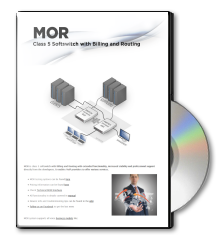Let’s talk about the best-kept secret in the calling card business. Many people have wondered how to build a successful calling card business in tough economic times. Every company—and I do mean every company—uses a specific key tactic to maximize their profits and grow their business. Competing in a tough industry against large phone companies, cellphones, and popular technology requires the use of certain strategic fees, which are listed below.
- SETUP/CONNECTION FEE: Most cards charge a setup fee when the user activates the card.
- SERVICES FEE: A service fee may be deducted from the card balance after every phone call. This fee is often a percentage of the cost per minute of the phone call.
- DISCONNECTION FEE: This charge is usually deducted when the user disconnects from the network after completing a call.
- ACTIVATION FEE: Some cards charge a fee when the consumer activates the card for the first time.
- SURCHARGE FEE: This fee is typically applied when the card is used at a public pay phone.
- REMAINING MINUTES FEE: Some companies charge a fee for each minute remaining on the card after a call has been disconnected.
- DAILY CHARGE: Some companies apply a daily charge for keeping a card active.
- WEEKLY FEE: Most long-distance providers charge a weekly fee for their services.
- MONTHLY FEE: Some companies charge a monthly fee for an activated card.
- TIME-BASED USAGE FEE: This fee is based on the time of day a call is made. Companies charge different amounts for busier times, such as nights and weekends.
- VALUE-BASED USAGE FEE: With this fee, the vendor offers to sell a product for a set amount of time for a set amount of money, regardless of how often the product will be used.
- MAINTENANCE FEE: Most companies charge a maintenance fee simply for keeping a card active. The frequency of the fee will depend on the company.
- GHOST MINUTES/GHOST BALANCE: This fee can be charged when the IVR shows an incorrect (usually higher) number of minutes or balance remaining on the card.
- MULTIPLE USE FEE: Often, the purchase agreement states that a caller must use the full amount of the card on a single call to get the maximum number of available minutes. When multiple calls are made using the same card, some companies will charge a penalty, which can be up to 40% of the remaining minutes.
- MINUTE ROUNDING: When a call lasts 50 seconds or more, the charge will be rounded to be nearest minute. For example: a 50-second call would be rounded to a full minute, a 2-minute 50-second call would be rounded to three minutes, and so on.
Most calling card companies make enough revenue to compete in a tough market through these types of small-print user agreements. However, it is important to remember the following ideas:
- Adding fine-print conditions to a contract is not illegal; it is a part of the business. However, NOT listing extra fees in the fine print but charging customers for them is illegal.
- Adding extra fees does not make you a shady business.
- Make sure the consumer cannot disable fees on the first call. That could be the difference between making a good profit and barely covering the cost of the product.
- Quality is very important to the consumer.
Hidden fees are acceptable as long as they are hidden in plain sight. Creating loyal customers and generating revenue are priorities for any business. Creating a strategy for how to present extra fees to your customers so they feel valued and respected while generating revenue and selling a quality product is the best-kept secret in the calling card business.
| If you want to try real Calling Card system, download testing version of MOR Class 5 Softswitch which provides infrastructure to start PINless Calling Card business without any risk! |
 |
Did we miss any calling card fees? Please let us know so we can update this list!
